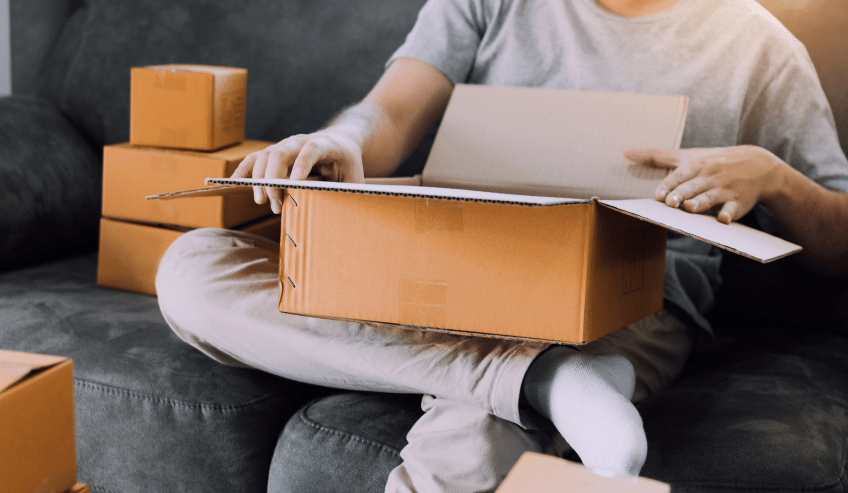
胶水话题博客

COVID-19大流行在2021年推动了电子商务市场前所未有的增长。这对2022年意味着什么?工作不仅仅是确保产品从A点到达B点。如果消费者包装商品(CPG)品牌想要保持竞争力,他们必须使用可持续包装为客户创造卓越的体验。
运输量的增长带来了更大量的废物,这些废物往往最终进入海洋和垃圾填埋场。因此,可持续包装设计正在成为消费者、品牌公司、原始设备制造商(OEM)和包装制造商的主要关注点。不幸的是,这个市场细分移动非常迅速,保持最新的地方和国家法规、趋势和消费者期望可能具有挑战性。然而,展望2022年,在满足消费者期望的同时,努力实现更可持续的未来,对于生产者、消费者,最重要的是,对于地球来说至关重要。
2022年是满足消费者不断上升的期望的一年。
提升开箱体验
包装本身已经从单纯的产品运输方式提升为品牌形象和价值的象征。想想标志性的Tiffany蓝盒®。它即刻引人注意,提高了产品的价值,是体验式包装的金标准。随着消费者期望的不断提升,品牌必须找到通过其电子商务包装复制这种体验的方法。这种态度的转变为包装制造商提供了一个重新审视包装策略的机会,而不仅仅是调整现有的包装。改善开箱体验可以采取多种形式。颜色、触感、气味和开箱的便利性等因素都起着作用,适当的平衡将为竞争对手提供竞争优势。例如,包装供应公司Neville and More开发了一种电子商务认证的瓶盖,确保产品在运输过程中不泄漏,但客户仍然可以轻松分配。
全渠道包装:“一体适用”的电子商务和店内包装
许多大型零售商严重依赖通过Instacart等应用程序或在线订单的后门交付方法来销售其产品。在中国,阿里巴巴的零售杂货店盒马报告称,80%的销售额是通过这种方式完成的。因此,包装必须从货架上取下并立即送到客户手中,而不会影响店内体验和美观。还必须考虑后门交付策略的潜在环境影响。因此,品牌可能需要考虑实施SIOC(Ship In Own Container)包装。SIOC包装是亚马逊创建的一个电子商务行业术语,用于描述无需二次包装直接运送给终端用户的包装。SIOC是理想的,因为它减少了过度包装,支持循环经济趋势,并帮助使消费者体验“无挫折”。
新技术 – 智能包装
智能手机、智能电视、智能手表之后是什么?是智能包装。从原则上讲,“智能包装”是指具有扩展功能的包装。智能包装有两种类型 – 活性包装和智能包装。
活性包装与包装内容物互动,在储存期间改善内容物的保质期或质量。智能包装允许与外界进行“交流”,为生产商、分销商和消费者提供深入的验证和跟踪信息。
智能包装仍处于发展的初级阶段,但预计到2024年市场价值将达到267亿美元。因此,智能包装在品牌与客户建立联系并提升他们的体验时具有潜在的差异化因素。
可持续性对于在2022年满足和超越客户期望至关重要。
政府通过立法、法规和税收对可持续性的压力加大
消费者在日常生活中越来越多地采用可持续发展的态度,包括他们的电子商务采购到达的包装。除了来自消费者的压力外,政府还在通过立法、法规和税收来推动变革。去年,欧洲对几种一次性塑料制品实施了禁令,例如塑料吸管和餐具。这引发了对电子商务包装中可能出现的其他类型塑料的审查。例如,英国将在2022年对含有少于30%回收材料的塑料包装实施塑料税。美国也在跟进。在拜登政府下,联邦立法者去年3月重新引入了摆脱塑料污染法案。该法案“将回收的经济负担置于消费品公司和包装供应商手中,并停止所有新塑料生产厂的投资”。目前,美国一些州已经对一次性使用的聚苯乙烯物品(包括电子商务包装中常见的填充物)实施了禁令,预计更多州将很快跟进。这种前瞻性思维表明,无论包装类型如何,品牌和消费者正变得更加聪明和更有意识。
更高关注通过纸质包装实现单一材料回收流
随着政府继续对继续在包装中使用塑料的消费品品牌和包装制造商实施或考虑实施塑料税,需要在电子商务包装设计中去除塑料并利用单一材料、纤维基包装的需求增加。单一材料包装由一种类型的材料组成,使用完全纤维基的电子商务包装在许多方面提高了可回收性。例如,包装制造商不再依赖消费者去除塑料撕裂条并将其放入垃圾桶而将其余包装放入回收箱。这也消除了在回收过程中塑料污染纤维的担忧。通过使用单一来源的纸质包装,包装制造商和消费品品牌有可能增加可回收成新纸制品的可用纤维数量。此外,这种策略还可能产生更多优质的回收纸捆,可用于制造更高质量的纸张。
增加水性涂层的使用
随着包装继续向更可持续的材料(如纸张)发展,必须记住消费者期望以优质的状态收到他们的购买品。然而,严苛的供应链可能会使产品难以安全到达,同时保持包装美观。根据Smithers功能性和屏障涂层未来2020报告,水性屏障涂层在2019-2024年的全球复合年增长率(CAGR)为9.7%。水性屏障涂层有助于增强电子商务包装,以在不影响开箱体验或可回收性的情况下应对各种条件,包括雨水、雪和湿度。此外,这些涂层可能提供包装的热封性能,并将在从塑料到纸质包装的过渡中发挥关键作用。它们甚至可能提供氧气屏障,消除包装内的塑料填充物。
H.B. Fuller在其中的角色是什么?
设计可持续的包装,同时创造优质的客户体验,可能看起来令人望而生畏,但H.B. Fuller在这里帮助开发创新的电子商务包装设计。我们有全系列的电子商务包装解决方案,包括粘合剂、涂层、淀粉添加剂和胶带,我们的专家正在积极致力于可持续和循环设计,以创造未来的包装解决方案。
我们的Advantra® 粘合剂专为电子商务包装设计,提供卓越的粘合性能。我们的热熔压敏粘合剂也设计用于配合离型纸,方便快捷地密封信封和箱子。
我们的Sesame®胶带可帮助实现二次包装的开封、关闭和退货。我们的工程师团队还设计胶带分配设备,并将协助您进行安装、工程和维护。
最后,我们全系列的H.B. Fuller Evolution水性涂层 为包装提供防潮性能,帮助其在严苛的电子商务供应链中保持完好,并为纤维基电子商务包装提供热封性能。
Blog Categories
Blog Categories
Archive
- 2025
- 2024
- 2023
- 2022
- 2021
